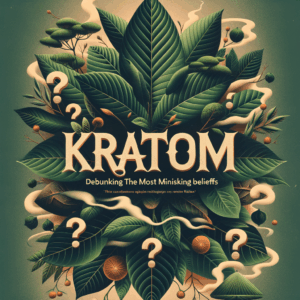
Kratom Safety: Essential Tips for Secure Use
- Understanding Kratom Safety: Essential Tips for Secure Use
- What Is Kratom?
- Potential Benefits of Kratom
- Risks Associated with Kratom Use
- Essential Tips for Safe Kratom Use
- Start with Low Doses
- Choose High-Quality Products
- Stay Hydrated
- Avoid Mixing Substances
- Keep a Journal
- Understand Different Strains
- Consult a Healthcare Professional
- Use with Respect and Responsibility
- Legal Considerations and Responsible Use
- The Importance of Community Resources
- Continuing Education
- Conclusion
- FAQs
- References
Understanding Kratom Safety: Essential Tips for Secure Use

Kratom, known scientifically as Mitragyna speciosa, has gained popularity as a herbal supplement. As more individuals explore its potential benefits, understanding how to use it safely becomes crucial. This article will provide you with essential tips for secure kratom use, including its benefits, risks, and how to mitigate them.
What Is Kratom?
Kratom is a tropical evergreen tree native to Southeast Asia. It belongs to the coffee family and is typically consumed in various forms, including powders, capsules, and teas. People use kratom for various reasons, often to alleviate pain, boost energy, or improve mood. The active compounds in kratom, primarily alkaloids, interact with opioid receptors in the brain.
Despite its growing acceptance, kratom isn’t without its controversies. Scientific research is still in the early stages, and the safety and efficacy of kratom remain hot topics. Therefore, assessing its risks and benefits is crucial.
Potential Benefits of Kratom
Many individuals turn to kratom for its medicinal properties. Here are some potential benefits:
1. Pain Relief: Kratom has been reported to help manage chronic pain. Users say they feel reduced discomfort without many of the side effects associated with pharmaceutical medications.
2. Mood Enhancement: Some people experience increased feelings of well-being and happiness. Kratom might help in dealing with anxiety or mild depression.
3. Energy Boost: In lower doses, kratom can act as a stimulant. Users often feel more alert and productive after consumption.
4. Withdrawal Relief: Some users report that kratom helps manage withdrawal symptoms from opioids. This highlights its potential as a transitional aid for those seeking recovery.
5. Enhanced Focus: Many people claim improved concentration and clarity. They find it easier to tackle tasks and feel more engaged in activities.
While these benefits sound promising, it’s essential to consider the other side of the coin.
Risks Associated with Kratom Use
Despite its potential benefits, kratom has risks that users must understand. Here’s an overview of some common safety concerns:
1. Dependence and Tolerance: Regular use can lead to tolerance, where users need larger doses to feel the effects. This often results in dependence, making it hard to stop.
2. Withdrawal Symptoms: Similar to opioids, kratom’s withdrawal can be severe. Symptoms may include nausea, irritability, and muscle aches.
3. Side Effects: Some users report side effects like dry mouth, constipation, and increased urination. Others may experience more adverse effects, including agitation or increased heart rate.
4. Contamination Risks: The kratom industry lacks regulation, leading to potential contamination with harmful substances. Users may unknowingly consume unsafe products.
5. Legal Status and Quality Control: The legality of kratom varies by location. Without stringent regulations, quality and potency can differ significantly.
Understanding these risks can arm you with the knowledge necessary for safe usage. Always proceed with caution when considering kratom.
Essential Tips for Safe Kratom Use
Now that we’ve explored the benefits and risks, here are some essential tips for safe kratom consumption:
Start with Low Doses
When trying kratom for the first time, always start with a low dose. This approach helps you gauge your body’s reaction without overwhelming it. A common starting dose for beginners is 1 to 2 grams. Adjust upward gradually if needed, but never rush the process.
Choose High-Quality Products
Invest in high-quality kratom from reputable vendors. Look for products that provide lab testing results. Quality products decrease the risk of contamination and ensure that you know what you’re consuming.
Stay Hydrated
Kratom can cause dehydration. To counteract this, drink plenty of water before, during, and after consumption. Maintaining hydration levels can help reduce side effects like constipation and dry mouth.
Avoid Mixing Substances
Do not mix kratom with alcohol or other drugs. Combining these substances can lead to adverse effects and increase risks significantly. If you’re taking medications, consult with a healthcare provider before trying kratom.
Keep a Journal
Tracking your kratom use can provide valuable insights. Record your dosage, the form of kratom consumed, and your feelings afterward. This journal will help you identify patterns and make informed decisions in the future.
Understand Different Strains
Kratom comes in various strains, each offering different effects. Research and understand the primary strains:
– Red Vein: Typically associated with relaxation and pain relief.
– Green Vein: Generally provides mild energy and focus without overwhelming stimulation.
– White Vein: Often used for enhanced energy and alertness.
Choosing the right strain for your needs is essential for maximizing benefits.
Consult a Healthcare Professional
Before incorporating kratom into your routine, consult a healthcare professional. They can provide guidance tailored to your specific health conditions and any medications you’re taking. Engaging a medical professional ensures you prioritize your safety.
Use with Respect and Responsibility
Always treat kratom with respect. It’s a powerful substance that can have significant effects on your body and mind. Moderation is key, and using it responsibly can lead to a safer experience.
Legal Considerations and Responsible Use
Kratom’s legal status varies worldwide. In some regions, it’s completely legal, while in others, it faces restrictions or bans. Be sure to familiarize yourself with your location’s laws regarding kratom use.
Responsible use goes hand in hand with legality. If you live in an area where kratom is legal, exercise caution and moderation. Always align your usage with the law and community guidelines.
The Importance of Community Resources
Connecting with others who use kratom can provide valuable insights. Online forums and local groups often share experiences, tips, and guidance. Engaging with these communities can enhance your understanding and promote safe practices.
Continuing Education
The kratom landscape is continually evolving. New research emerges, shedding light on its safety and efficacy. Stay informed by following credible sources and educating yourself regularly.
Conclusion
Kratom safety hinges on informed, responsible use. By grasping the risks and benefits, starting slowly, staying hydrated, and investing in quality products, you can enhance your experience. If you choose to revolutionize your wellness journey with kratom, make safety your priority.
FAQs
1. Is kratom legal everywhere?
No, kratom’s legal status varies. Check local laws to understand its legality in your area.
2. What are the common side effects of kratom?
Side effects may include nausea, constipation, and increased heart rate. Always consult a professional if you experience severe side effects.
3. How long does kratom stay in your system?
Kratom can remain detectable for several days. Its effects typically last between 5-6 hours.
4. Can kratom help with anxiety?
Some users report reduced anxiety levels, but individual experiences vary. Always approach it cautiously and consult a healthcare provider.
5. Is it safe to combine kratom with other supplements?
Mixing kratom with other substances can be risky. Consult a healthcare professional before combining it with any supplements.
6. How do I choose a good vendor?
Look for vendors that offer lab-tested products and transparent sourcing information. Community reviews can also be helpful.
7. Can I develop a tolerance to kratom?
Yes, regular use can lead to tolerance, requiring higher doses to achieve the same effects.
8. What should I do if I experience withdrawal symptoms?
Seek professional help immediately. Gradual tapering can often help manage withdrawal more effectively.
9. Can kratom interact with prescription medications?
Yes, kratom can interact adversely with many medications. Always consult your physician before use.
10. Are there any long-term studies on kratom safety?
Research is still ongoing. Stay updated with credible sources to learn more about long-term safety.
References
– National Institute on Drug Abuse (NIDA)
– FDA: Kratom Safety Risks
– Kratom: A New Perspective from the Expert
– American Kratom Association
By prioritizing safety and responsible use, you can explore the potential benefits of kratom with a clearer mind and a confident heart.


